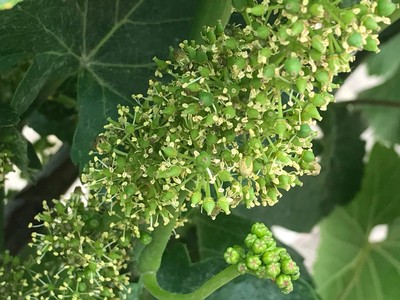This month we are watching our vines grow...literally, and we're watching them very carefully too. For this is the time of the
So far this spring, we have been enjoying mild weather. According to Tuesdays Sonoma Index Tribune, our year-to-date rainfall is 10.36 inches. (The rainfall year is calculated from October 1st to September 30th.) At this point in 2020, we had received 14.02 inches of rain. We are already more than twenty five percent behind last year. Honestly, we are starting to get worried and are planning for a drought year in the vineyards.
Our vines, incidentally, look very good this year with lots of healthy growth. Their foliage also is quite dense, which we like to see because the vine's leave are where photosynthesis takes place. This is Mother Nature's way of converting sunlight to carbohydrates which nourish both the vine and its fruit. Carbohydrates not needed during this season will in the fall be stored in the vine's root system to sustain it thought the winter, and of course the more carbohydrate reserve, the stronger and more vigorous the vine will be next spring.
Auguri!
